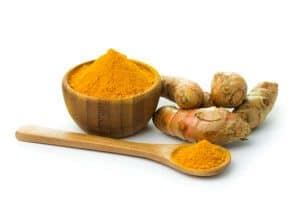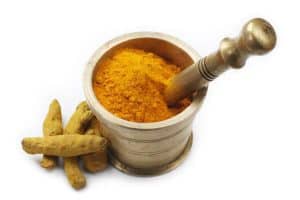Phytoconstituents or plant-based molecules are being actively researched due to their ability to provide a number of health benefits with minimal or negligible side effects.
And since we have an entire portal dedicated to it you must be aware that curcumin and turmeric are the most important plant-based medicinal agents that hold value in the health industry.
Curcumin is a pleiotropic molecule and is available in supplemental form.
When you use the word ‘turmeric’ , the first image that flashes is that of the orange powder that is sprinkled in every Indian curry.
And yes many people globally are aware of the appearance and aroma of turmeric powder. (Read Introduction to Turmeric)
Turmeric root is the real spice from where both turmeric powder and curcumin originate. Today we will be going over the lesser-known details of turmeric root.
Table of Contents
- What is turmeric root?
- How many types of turmeric exist?
- What climatic conditions are required for the growth of turmeric?
- What are the therapeutic components of turmeric root?
- Health benefits of Turmeric root
- Traditional Medicinal Uses of Turmeric root
- How to take turmeric root for health benefits?
- Precautions
- Conclusion
What is turmeric root?

Today it is popularly called ‘The Golden Spice’ or ‘The Spice of Life’.
Turmeric is cultivated popularly in India followed by Bangladesh, China, Thailand, Cambodia, Malaysia, Indonesia, and the Philippines.
India is the largest producer, consumer, and exporter of turmeric.
The name turmeric has originated from Medieval Latin name terramerita or French name terre merite which meant meritorious earth- then a name for powdered turmeric.
In English turmeric was called Indian saffron. Sanskrit has over 55 names for turmeric herb. Most of the Indian population refers to turmeric as ‘haldi’ , while in South it is popularly called ‘manjal’.
Yellow turmeric or the one that we regularly discuss is called Curcuma longa scientifically. Turmeric plants are around 1 m in height and have long oblong leaves.
What we call the turmeric root, is actually the rhizome that grows below the soil and matures after which the plants are gathered annually for the rhizomes.
The rhizomes are a pale brown on the outside with a rough texture.
They are averagely 1-3 inches in length and 1 inch in diameter with small tubers branching from the sides. On the inside, these rhizomes have a bright orange or yellow colored flesh.
Part of these rhizomes is used for the preparation of turmeric powder while some are reseeded for the next crop.
How many types of turmeric exist?
Yellow turmeric comes under genus Curcuma which belongs to the ginger family. Around 133 species or more have been identified under genus Curcuma. The commercially important ones include:
- Curcuma longa
- Curcuma amada or Mango ginger
- Curcuma zedoaria
- Curcuma angustifolia or Indian arrowroot
- Curcuma aromatica
- Curcuma caesia or Black turmeric
Among the Curcuma longa or yellow turmeric, there are a number of varieties depending on the regions where they grow and the curcumin content differs. These include Alleppey, Prabha, Suguna, Prathiba, Sudarsana etc.
Allepey Finger turmeric is the one that is primarily exported and has a curcumin content of 6%. Andhra Pradesh is the largest producer of turmeric.
Other Indian states that contribute to turmeric production are Tamil Nadu, Orissa, Karnataka, West Bengal, and Maharashtra.
What climatic conditions are required for the growth of turmeric?
Turmeric plant requires a temperature of 18-30 degree Celsius to grow with an annual rainfall of 640 mm to 4200mm is tolerated by the plant. Irrigation is not required in areas where there is ample rainfall.
Sprouting of turmeric rhizomes occurs in a temperature range of 25-30 degree Celsius.
They elongate well in the same temperature range but do not survive temperatures higher than 40 degree Celsius.
Turmeric grows well in shades but is said to produce better and larger rhizomes when grown in open grounds exposed to the sun. It grows well in loose, friable well-drained loamy or alluvial soils.
Soil pH range requirement is 4.3 to 7.5. And the crop is sensitive to saline soil or saline water irrigation. Planting season in India for turmeric is the month of April and continues till the first week of July.
Various factors such as soil mineral content, planting time and even soil texture affect the rhizome yield. (Read 4 Factors To Consider While Growing Turmeric)
What are the therapeutic components of turmeric root?
As many as 100 components have been identified in turmeric, but they are primarily categorized into 2 sections:
- Curcuminoids
- Turmeric oil
Curcuminoids are the components that offer the orange-yellow color to the turmeric root and are natural antioxidants. Curcumin, demethoxycurcumin, and bisdemethoxycurcumin are the 3 principal curcuminoids. These constitute 4-6% of the root content.
Turmeric oils constitute 3% of the root and contain compounds d-α-phellandrene, d-sabinene, cinol, borneol, zingiberene, and sesquiterpenes. Ar-turmerone is the most important constituent of turmeric oil.
Turmerone, ar-turmerone, and zingiberene impart the warm aroma to turmeric.
Turmeric contains around 9% moisture, omega 3 fatty acids and alpha-linolenic acid (2.5%). Nutritionally 100g of turmeric provides 390 calories, 10g total fat, 69.9g total carbohydrates, and 21g dietary fibre.
It also contains minerals like calcium, potassium, phosphorous, sodium, iron and vitamins B and C.
Health benefits of Turmeric root
Turmeric root contains curcumin which is blessed with a number of medicinal and pharmacological properties. Turmeric oil also has medicinal value. (Read Health Benefits Of Turmeric)
Here is a list of top benefits of turmeric:
1. It is a natural anti-inflammatory.
2. It is a powerful antioxidant.
3. It has potent anti-microbial properties.
4. It has anti-cancer properties.
5. It has wound healing properties.
6. It protects skin health.
7. It regulates immune responses.
8. It is neuroprotective in nature and benefits brain health.
9. It protects heart health.
10. It works as a detoxifying agent and protects from heavy metal, carcinogen, and drug-induced toxicity.
11. It supports both male and female reproductive health.
12. It is great for oral and dental hygiene.
13. It has a pain relieving effect.
14. It benefits in metabolic diseases like diabetes, metabolic syndrome, etc.
15. It preserves bone health and protects from arthritis, osteoporosis, etc.
Traditional Medicinal Uses of Turmeric root
Turmeric has been used in both Ayurveda and Unani systems of medicine. I
t is found to have a number of medicinal activities as per traditional texts such as aromatic, stimulant, tonic, carminative, and anthelmintic.
It is used externally for treating wounds and ulcers and for conditions like sprains, eczema, parasitic skin diseases, inflammation of joints, chicken pox, common cold, and cough, etc. It is used in diseases like bronchitis, vertigo, urinary diseases, etc.
It has also been used as an antidote for snake venom and insect bites.
Here are a couple of traditional medicinal uses of turmeric:
1. Turmeric relieves Pain and Inflammation
Turmeric powder prepared from the rhizomes is used to relieve pain in sprains and injuries. A paste of turmeric is made with lime and saltpetre or with slaked lime and applied topically for reducing inflammation. Turmeric oil also has anti-inflammatory properties.
It is also possible to make a paste of turmeric powder with olive or coconut oil and apply it topically to relieve pain and inflammation. (Read How to use Turmeric topically for Pain and Inflammation)
2. Turmeric remedies skin problems
Turmeric mixed with sandalwood is used to make a paste for glowing skin. Fresh turmeric juice can be applied topically for parasitic conditions. The paste of turmeric and neem leaves has anti-microbial action.
You can make a paste of turmeric powder with coconut or olive oil and apply it topically for wound healing or any skin condition. Conduct a patch test prior. Turmeric oil also has anti-microbial property.
3. Turmeric benefits in common cold and fever
Traditionally turmeric powder mixed with warm milk is used as a home remedy for the common cold. It is excellent for pain relief as well. You can find the recipe for Turmeric Milk here.
4. Turmeric finds use in primary health care
Traditionally turmeric has been used for medicinal purposes in many health conditions and symptomatic treatment.
- Fresh turmeric juice with a pinch of salt is said to relieve stomach ache.
- Irregular menstruation can be relieved by consuming fresh turmeric juice. Juice a large piece of fresh turmeric and add a pinch of salt and cumin powder. Consume daily in the morning.
- Fresh turmeric juice with amla juice (Embilica officianalis) on an empty stomach can benefit in diabetes.
- Dry turmeric powder can be applied externally on wounds.
- Turmeric milk is an effective remedy for cold and allergies.
- 1 to 2 g of turmeric powder with ghee can relieve cough.
- Fresh turmeric juice mixed with honey and applied on oral ulcers can reduce them. Turmeric powder mixed with honey also helps in apthous ulcers.
- The paste of Holy Basil (Tulsi) and fresh turmeric rhizome can be applied to the affected site to relieve dental pain.
- Turmeric powder mixed with Holy Basil leaf juice applied topically can help relieve pain, inflammation and swelling in case of insect bites.
- Turmeric and ginger mixed with warm milk serves as a digestive aid and relieves flatulence.
How to take turmeric root for health benefits?

Around 1 inch piece per day would do. It has a warm bitter taste.
Another way of consuming is chopping it and storing it in brine or salt water.
You can add a pinch of black pepper powder to it as well. This makes a good accompaniment with any dish that you incorporate in your major meals.
We have also got an awesome Turmeric Pickle recipe that you can try. Apart from that you can also juice fresh turmeric and consume it daily. You can also make Turmeric Powder at Home from Fresh turmeric.
With homemade turmeric powder, you can also make DIY Turmeric Capsules. If looking for good brands of turmeric powder do check our recommendations on organic turmeric powder brands.
One of the best ways to consume turmeric is the Golden Paste.
Yes, you can even make Golden Paste from fresh turmeric.
Start with small doses say ¼-1/2 tsp a day. This is to avoid any gastric discomfort. Continue for a week and if no side effects are observed increase gradually.
A good dose would be 1-2 teaspoon of Golden Paste 2-3 times a day (precisely 1 tsp 3 times a day) should help.
Avoid taking it on an empty stomach and close to the time of taking any medications.
It is also possible to make Turmeric tea by boiling fresh turmeric roots in water. If intending to make Turmeric Milk first boil turmeric in water, prepare an extract of it and then add milk to it.
Precautions
Turmeric in diet is absolutely safe.
However gastric discomfort may occur at high doses.
Therefore it is always advisable to start with small amounts and then increase gradually.
Curcumin in turmeric has anti-platelet property. If suffering from a bleeding risk or taking anti-coagulants please consult a health practitioner about taking turmeric.
Dietary turmeric should not pose any problem but it is best to consult an herbalist. (Read Is turmeric a blood thinner?)
Curcumin supplements should be discontinued 2 weeks prior to any surgical procedure. Avoid taking turmeric and curcumin on an empty stomach as it may trigger acid reflux like symptoms in sensitive individuals.
Curcumin is proven to cause gall bladder contraction hence it should be avoided when suffering from active gallbladder duct obstruction or gallstone issues.
Curcumin interferes in drug metabolism and hence one should avoid taking curcumin supplements and any medications concomitantly. Maintain a 3-4 hour gap. Dietary turmeric should not pose any such risk since the percentage of curcumin is much less in comparison to supplemental form.
Conclusion
Turmeric root is the source of turmeric powder and curcumin. The essence of turmeric roots is that can be easily incorporated in any dish and they have more to offer than just curcumin. (Turmeric vs Curcumin: Which should you take?)
The most simple ways to add turmeric in your diet is to ad Golden Paste to meals, or juice fresh turmeric or simply chop and eat it raw. What is your unique way of eating turmeric roots? Do share your ideas below in the comments section.


In Keto, I was told to add Turmeric powder in my coffee. Turmeric helps turn Liseral fat into Brown fat. Where Ketones can use brown fat.
12 Riverview Court
My dog suffered from joint pain and swollen bones. Asked the vet if we can buy anti inflammatory drugs but we didnt. Tried turmeric root..small piece grind and took the juice..put in 5ml syringe and slowly put in dogs mouth making sure all juice will not spill. After an hour he was able to walk slowly and after 6 hrs gave another shot in syringe..next day he s fine like nothing happens
Thank you sharing your experience Isabelita. We are happy to know that turmeric benefits your pet’s health.
I’ve found the best way to consume turmeric is by juicing it.
Yes, juicing turmeric is great for health.
Can you comment on absorption and bioavailability of curcumin , especially in regard to bioperine.
Hi. Piperine does increase the absorption of curcumin. You can read this post for more details:
https://www.turmericforhealth.com/general-info/how-to-improve-bioavailability-of-turmeric